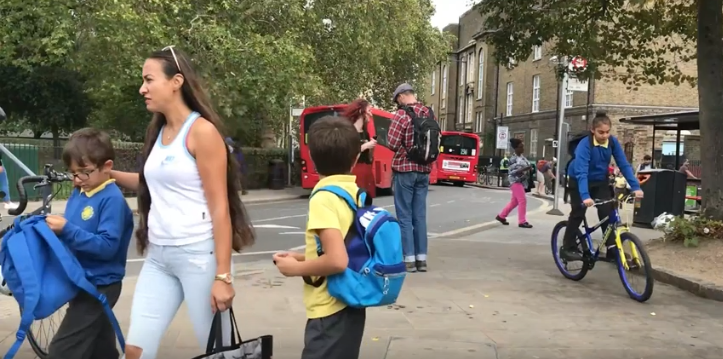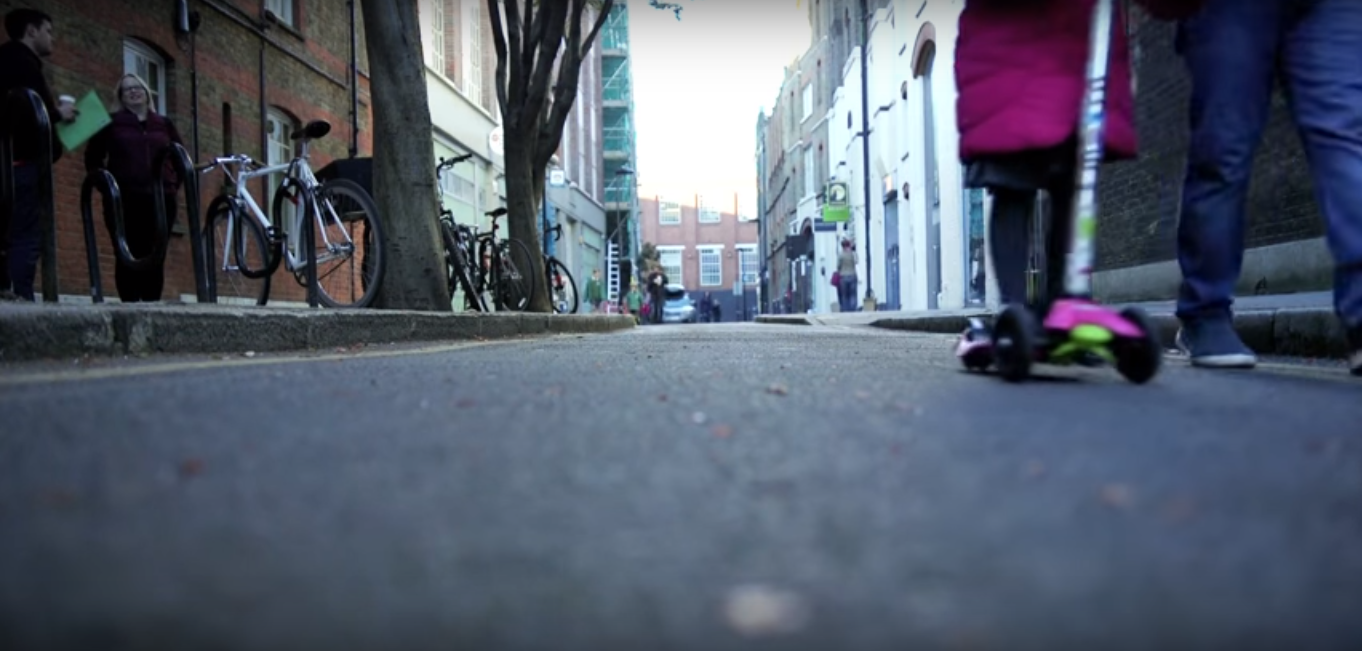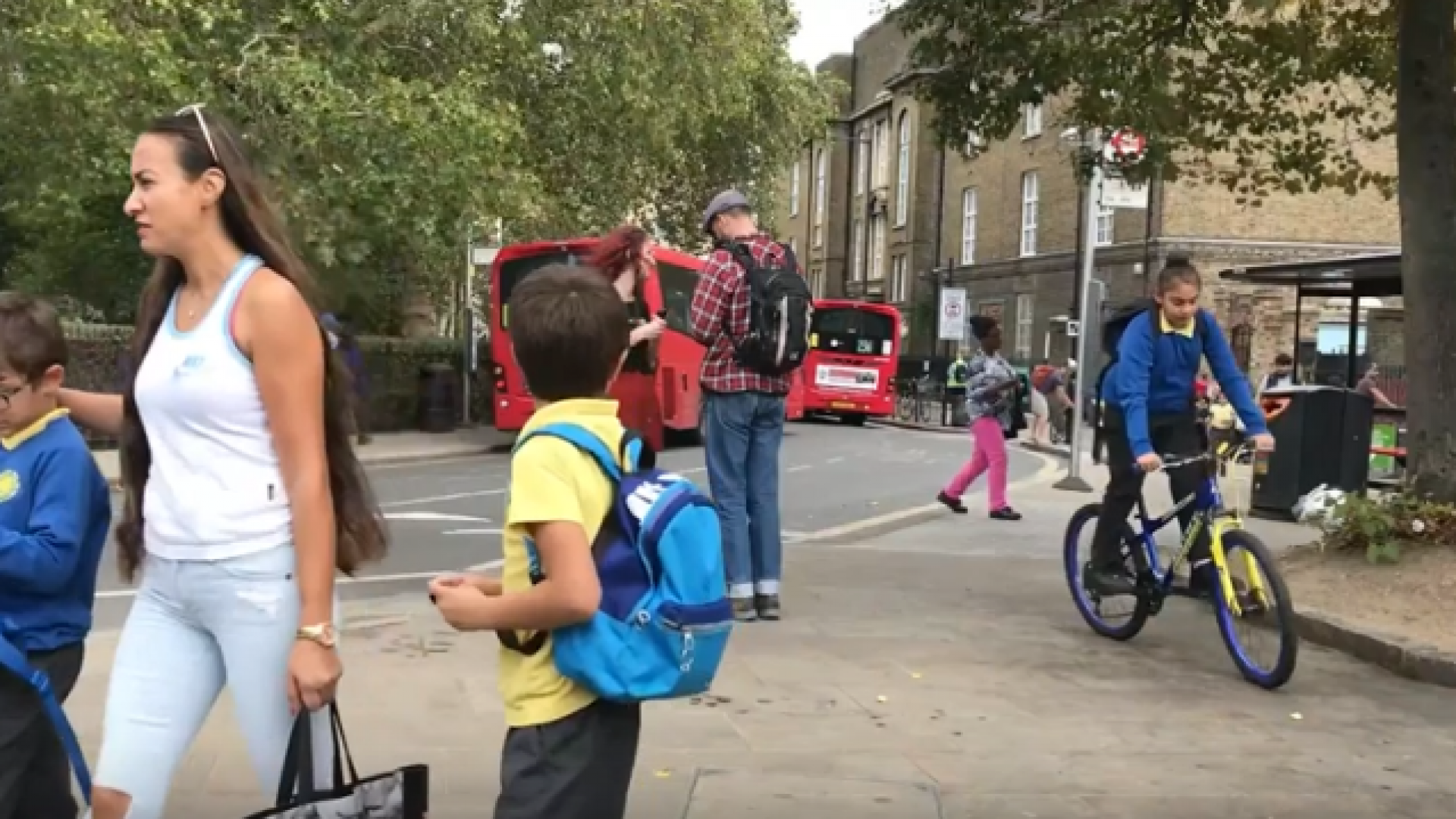Active travel
Active travel champion Dr Adrian Davis from Napier University likes to remind people that children should be free from disease. Also that ‘jumping up and down’ is rather important in order to achieve that. The report from the International Journal of Behavioural Nutrition & Physical Activity, is a stark reminder that physical activity amongst 5-18 years old has reduced drastically in the past 30 years, with walking trips to school falling by 31% since 1995-97. In addition, evidence shows time and again that cycling and walking reduce mortality by 10% in adults. Going to school is the most regular and consistent trip children do, making it the ideal opportunity to make it an active one.
Active body, active brain
Dr Davis described how the Peach Project has shown how activity habits taken up as children last throughout a lifespan as well as throughout the day. Starting your school day by a walk or a short cycle ride to class, he says, is better than having to digest your cornflakes sitting at the back of a car. Furthermore, there is evidence of a link between more physical activity and enhanced academic attainment and cognitive performance.
The latest Chief Medical Official Report, shows that “children in England are among the most overweight in Europe: 24% of children start primary school overweight or obese, rising to 33% by the time they leave primary school.” Exercising vigorously at least once a day is key to a long lasting good health and this could be so easily achieved by having an active journey to school. Active travel also has the potential to transcend poor health inequality as the distribution of obesity in children is strongly linked to levels of deprivation.
Consecutive policies have led to children being advised to be off the road, missing out on the opportunity to be more active, losing the freedom to be children and grow into independent adults. It’s time to turn away from these damaging ill-thought decisions and reverse the trend.
Mental health
Regular exercise is effective at keeping a good level of wellbeing and mental health. Former Chief Medical Officer, Sir Liam Donaldson famously wrote in his 2009 Annual report: “The potential benefits of physical activity to health are huge. If a medication existed which had a similar effect, it would be regarded as a ‘wonder drug’ or ‘miracle cure’.”
Physical activity leads to chemical changes in the brain that trigger a positive mood and a feel good mindset. Combining this with an activity children generally enjoy, like cycling or scooting, with their mates or chatting away on the way to school would result in pupils having a great start of the day, already focused and ready to learn. Cycling to school also increases self-confidence as children would have to put in practice a skill they have learnt as well as exercising self control.
Air quality
The government recently published a Review of Interventions to Improve Outdoor Air Quality and Public Health. The report confirms that children’s long term health is at risk. As vulnerable receptors, their lungs development is particularly at risk with damages that will stay with them for the rest of their lives. Pollution also worsens asthma, and increases risks of allergies; it impacts on the brain by reducing attentiveness and memory. It has been linked to depression, anxiety and attention deficit disorder as well as raising the risk of heart disease later in life.
Some of the most polluted schools are on arterial and main roads, which would make these locations unsuitable for school streets-type of restrictions. Campaigner Little Ninja says: “Hundreds of thousands of children in the UK, live, travel and attend schools on arterial and main roads. These children are regularly exposed to air pollution that will reduce their lung capacity and over a longer period it can result in heart attacks and lung diseases, cancers, even damage to the brain, nerves, liver, and kidneys and is associated with significant life-shortening and poor respiratory health.” Therefore, it is very important and equally urgent that the relevant authorities explore suitable solutions for these schools too. In the short term, there are mitigating steps that can be taken like funding living green walls, preventing stop and start (ten times more emissions than moving vehicles) and idling (twice as much) outside school gates and class windows on main roads. The long term solution has to involve a concerted effort to remove unnecessary motor traffic, and provides a healthy environment. Families should be able to chose active travel to school wherever they live or go, without worrying about the impacts of pollution on their health.
It’s also worth remembering that pollution is worse inside cars. So, not only driving to school doesn’t shield children in the car from poor air quality but it also deprives them from a chance to offset the effects of pollution by letting them enjoy regular physical activity.



